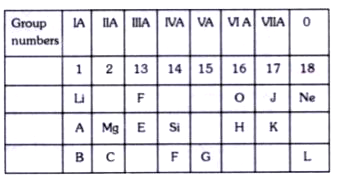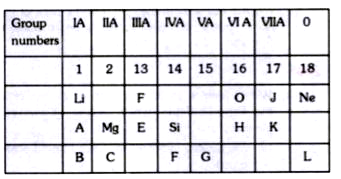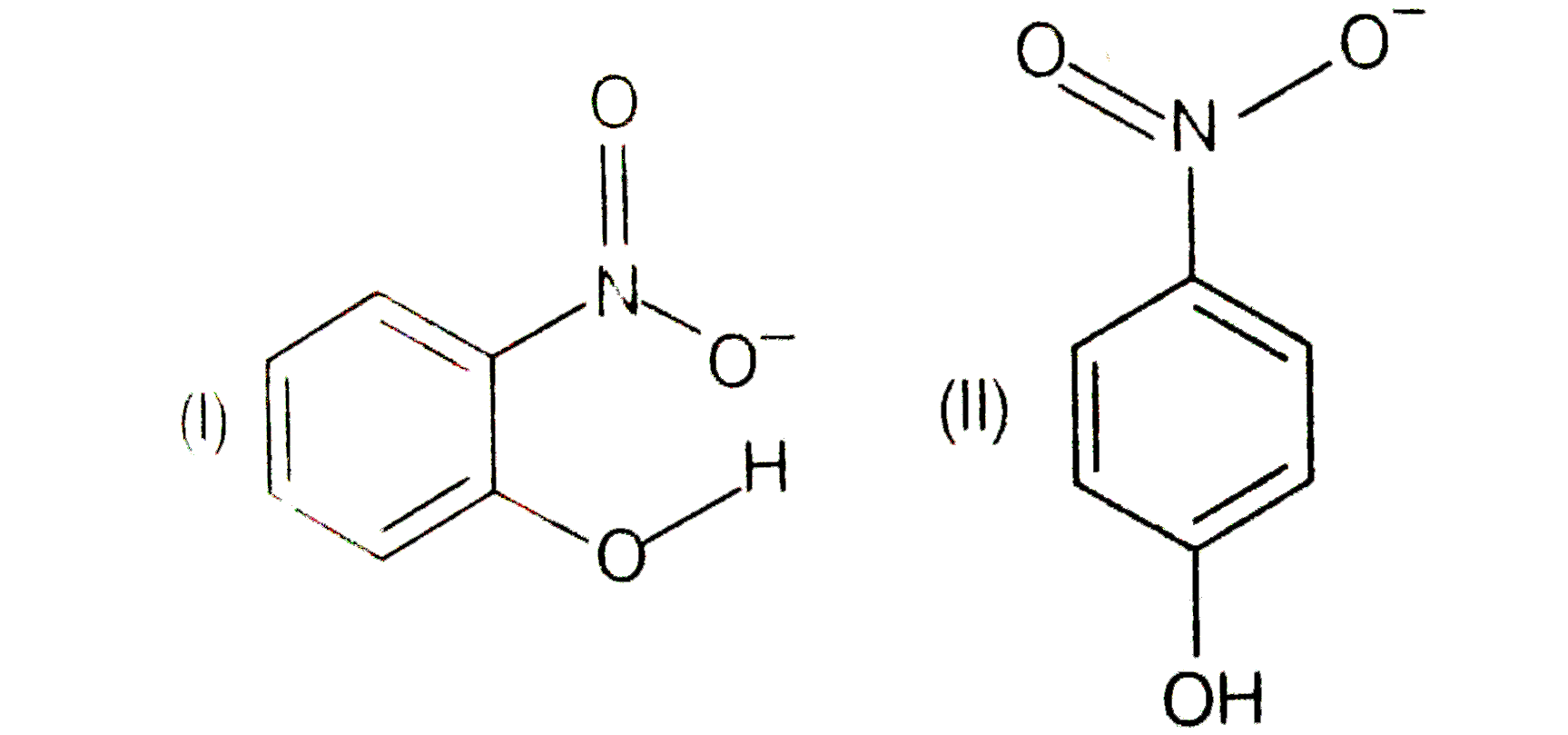a. "Stability of a crystal is reflected is reflected in the magnitude of its melting points" Comment.
b. Melting points of some compounds are given below water =273K, ethyl alcohol =153.7K, diethyl ether =156.8K, methane =90.5K. What can you say about the intermolecular forces between the molecules of these compounds?
Solution:
a. Stability of a crystal and its melting point:
The stability of a crystal is indeed reflected in the magnitude of its melting point. The melting point of a substance is the temperature at which it changes from a solid to a liquid. This transition occurs when the thermal energy of the particles in the solid is sufficient to overcome the intermolecular forces holding them in a fixed position.
1. Intermolecular Forces: The stronger the intermolecular forces (such as ionic bonds, covalent bonds, hydrogen bonds, dipole-dipole interactions, and London dispersion forces), the more energy (in the form of heat) is required to break these forces and change the solid into a liquid. Therefore, substances with strong intermolecular forces will have higher melting points.
2. Crystal Stability: A crystal that has a high melting point is typically more stable because its constituent particles are held together by strong forces. Conversely, a crystal with a low melting point is less stable, indicating weaker intermolecular forces.
In summary, the melting point is a direct indicator of the stability of a crystal: higher melting points correspond to greater stability due to stronger intermolecular forces.
b. Analysis of melting points of given compounds:
The melting points of the compounds are as follows:
- Water: 273 K
- Ethyl alcohol (C2H5OH): 153.7 K
- Diethyl ether (C2H5OC2H5): 156.8 K
- Methane (CH4): 90.5 K
1. Water: Water has the highest melting point (273 K) due to the presence of strong hydrogen bonds between its molecules. Hydrogen bonding is a strong type of dipole-dipole interaction that significantly increases the melting point.
2. Ethyl Alcohol: Ethyl alcohol has a melting point of 153.7 K. It is also a polar molecule and can form hydrogen bonds, but these are weaker than those in water due to the presence of a larger hydrocarbon chain.
3. Diethyl Ether: Diethyl ether has a melting point of 156.8 K. Although it is a polar molecule, it does not form hydrogen bonds as effectively as alcohols do, leading to a lower melting point than water but higher than non-polar compounds.
4. Methane: Methane has the lowest melting point (90.5 K) among the listed compounds. It is a non-polar molecule and primarily exhibits weak London dispersion forces, which are much weaker than hydrogen bonds or dipole-dipole interactions.
Conclusion: The melting points indicate the strength of intermolecular forces present in these compounds. Water, with its strong hydrogen bonds, has the highest melting point, followed by ethyl alcohol and diethyl ether, which have weaker hydrogen bonding and dipole interactions. Methane, being non-polar, has the lowest melting point due to the weak dispersion forces.
- Water: 273 K
- Ethyl alcohol (C2H5OH): 153.7 K
- Diethyl ether (C2H5OC2H5): 156.8 K
- Methane (CH4): 90.5 K
Similar Questions
a. "Stability of a crystal is reflected in the magnitude of its melting points" Comment.
b. Melting points of some compounds are given below water =273K, ethyl alcohol =153.7K, diethyl ether =156.8K, methane =90.5K. What can you say about the intermolecular forces between the molecules of these compounds?View SolutionUse the information and data given below to answer the question (a) to (c),
Stronger intermolecular forces result in higher boiling point.
Strength of London forces increases with the number of electrons in the molecule.
Boiling point of HF,HCl,HBr and HI are 293 K, 189 K, 206 K and 238 K respectively.
(a) which type of intermolecular forces are present in the molecules HF,HCl,HBr and HI ?
(b) Looking at the trend of boiling points of HCl,HBr and HI, explain out of dipole-dipole interaction and London interaction, which one is predominant here.
(c) Why is boiling point of hydrogen fluoride highest while that of hydrogen chloride lowest ?View SolutionConsider the section of the periodic table given below.
Note: In this table, B does not represent boron
C does not represent carbon
F does not represent fluorine
H does not represent hydrogen
K does not represent potassium
You must see the position of the element in the periodic table.
Some elements are given in their own symbol and position in the periodic table, while others are shown with a letter. With reference to the table:
Write the formula of the compound between B and H.View SolutionConsider the section of the periodic table given below.

Note : In this table B does not represent boron
C does not represent carbon
F does not represent fluorine
H does not represent hydrogen
K does not represent potassium
You must see the position of the element in the periodic table.
Some elements are given in their own symbol and position in the periodic table, while others are shown with a letter. With reference to the table:
Write the formula of the compound between B and H.View SolutionConsider the section of the periodic table given below.

Note : In this table B does not represent boron
C does not represent carbon
F does not represent fluorine
H does not represent hydrogen
K does not represent potassium
You must see the position of the element in the periodic table.
Some elements are given in their own symbol and position in the periodic table, while others are shown with a letter. With reference to the table:
Draw the electron dot structure for the compound formed between C and K.View SolutionConsider the section of the periodic table given below.
Note: In this table, B does not represent boron
C does not represent carbon
F does not represent fluorine
H does not represent hydrogen
K does not represent potassium
You must see the position of the element in the periodic table.
Some elements are given in their own symbol and position in the periodic table, while others are shown with a letter. With reference to the table:
In the compound between F and J, what type of bond will be formed?View SolutionConsider the section of the periodic table given below.

Note : In this table B does not represent boron
C does not represent carbon
F does not represent fluorine
H does not represent hydrogen
K does not represent potassium
You must see the position of the element in the periodic table.
Some elements are given in their own symbol and position in the periodic table, while others are shown with a letter. With reference to the table:
In the compound between F and J, what type of bond will be formed ?View SolutionStructures of molecules of two compounds are given below.

a) Which of the two compounds will have intermolecular hydrogen bonding and which compound is expected to show intramolecular hydrogen bonding?
b) The melting point of compound depends on, among other things, the extent of hydrogen bonding. On this basis explain which of the above two compounds will show higher melting point?
c) Solubility of compounds in water depends on powers to form hydrogen bonds with water. Which of the above compounds will form hydrogen bond with easily and be more stable in it?View SolutionThe electrical resistance in ohms of a certain thermometer varies with temperature ac cording to the approximate law: R=R0[1+α(T−T0)]
The resistances is 101.6Ω at the triple-point of water 273.16K, and 165.5Ω at the normal melting point of lead (600.5K). What is the temperature when the resistance is 123.4Ω?View SolutionProperties such as boiling point, freezing point and vapour pressure of a pure solvent change when solute molecules are added to get homogenous solution. These are called colligative properties. Application of colligative properties are very useful in day-to-day life. One of its example is the use of ethylene glycol and water mixture as anti-freezing liquid in the radiator of automobiles.
A solution M is prepared by mixing ethanol and water. The mole fraction of ethanol in the mixture is 0.9.
Given : Freezing point depression constant of water (Kwaterf)=1.86Kmol−1
Freezing point depression constant of ethanol (Kethonalf)=2.0Kkgmol−1
Boiling point elevation constant of water (Kwaterb)=0.52Kkgmol−1
Boiling point elevation constant of ethanol (Kethonalb)=1.2Kkgmol−1
Standard freezing point of water =273K
Standard freezing point of ethonal =155.7K
Standard boiling point of water =373K
Standard boiling point of ethanol =351.5K
Vapour pressure of pure water =32.8mmHg
Vapour pressure of pure ethonal =40mmHg
Molecular weight of water =18gmol−1
Molecular weight of ethonal =45gmol−1
In answering the following questions, consider the solution to be ideal ideal solutions and solutes to be non-volatile and non-dissociative.
Water is added to the solution M such lthat the molecules fraction of water in t he solution becomes 0.9. The boiling point of this solution is :View Solution

